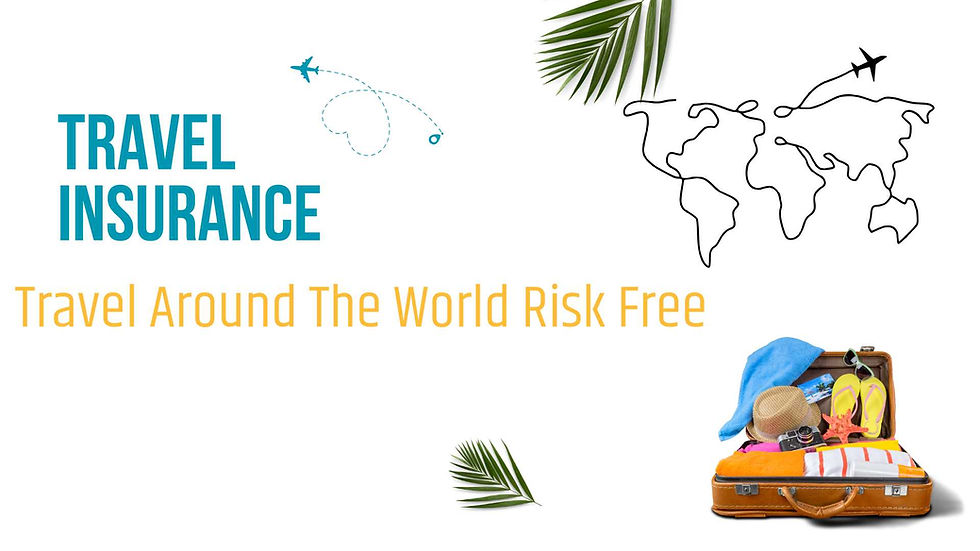Medical Emergencies Abroad: Are You Really Covered?
- Interns @btwimf.com
- Jul 21
- 3 min read
Updated: Jul 23

Traveling abroad is an exciting adventure—until the unexpected happens. Imagine falling ill or getting injured far from home. Will your health insurance actually pay for treatment overseas? Or will you be stuck with an eye-watering bill and no clear path forward? That’s where the critical question arises: medical emergencies abroad—are you really covered?
Let’s break down what most travelers overlook, what your insurance likely won’t tell you, and how to avoid costly mistakes when navigating medical care in a foreign country.
What Your Regular Health Insurance Might Miss
Most domestic health insurance plans provide limited or no coverage for medical services outside your home country. Even if your plan does extend abroad, there are often major restrictions, like:
No coverage for medical evacuation
Limited reimbursement for foreign hospitals
High out-of-network deductibles
Paperwork nightmares when filing international claims
So when it comes to medical emergencies abroad, are you really covered? Often, the answer is no—or not nearly enough.
Medical Evacuation: The Hidden Risk
One of the biggest financial risks while traveling is emergency medical evacuation. If you suffer a serious accident or illness in a remote area, getting you to a proper medical facility—or back home—can cost anywhere from $25,000 to over $100,000, depending on the location.
According to the U.S. Department of State, medical evacuation is “rarely covered” by standard insurance, and travelers may be expected to pay upfront in full.
Real Stories, Real Costs
A tourist hiking in Southeast Asia suffered a compound leg fracture and had to be airlifted to a hospital in Singapore. The evacuation alone cost $65,000, and his insurance denied the claim.
A retiree in Europe experienced a heart attack and required hospitalization. Though stabilized, his policy only reimbursed 40% of the bill—months after treatment.
When asking yourself, “Medical emergencies abroad—are you really covered?”—consider that these are not rare exceptions. They’re becoming increasingly common as more people travel without proper coverage.
Statistics to Consider
Nearly 40% of travelers believe their domestic insurance will cover all overseas medical costs—it's a common misconception. (Source)
The average hospital stay abroad can cost $3,000–$10,000 USD or more depending on the country.
Only 12% of travelers purchase specialized travel medical insurance that includes evacuation and emergency coverage.
These numbers suggest a majority of travelers are underprepared—and often uninsured—for medical emergencies abroad.
What Kind of Coverage Do You Really Need?
When evaluating your options, look for the following features in a travel medical policy:
Emergency medical care: Minimum of $100,000 recommended.
Medical evacuation: Should cover up to $250,000.
Repatriation of remains: Often overlooked but important.
24/7 assistance services: Multilingual support and claims help.
Pre-existing condition coverage: If applicable to you.
Without these, the answer to “Medical emergencies abroad: are you really covered?” is almost always no.
How to Be Prepared
Call your insurer before you travel: Ask what is covered outside your home country.
Review your benefits summary: Look for phrases like “international coverage” or “global emergency care.”
Purchase supplemental travel medical insurance if needed.
Save key emergency numbers and know how to contact medical services in your destination.
Keep all receipts and medical records if you need to file a claim.
FAQs: Medical Emergencies Abroad – Are You Really Covered?
Q1: Does regular health insurance cover me while traveling abroad?
A: Often, no. Most plans don’t include emergency evacuation or full hospital coverage outside the country.
Q2: What happens if I get hospitalized overseas?
A: You may have to pay out of pocket. Without proper coverage, treatment could cost thousands upfront.
Q3: Is travel insurance the same as travel medical insurance?
A: Not exactly. Travel insurance covers trip cancellations and lost luggage. You need travel medical insurance to cover health emergencies abroad.
Q4: Can I buy coverage even after my trip has started?
A: Some insurers allow late enrollment, but it’s best to purchase coverage before you leave to avoid exclusions.
Q5: Is medical evacuation really that expensive?
A: Yes. Depending on the region, air ambulance services can cost between $25,000 to $150,000.
References
U.S. Department of State – Travel Medical Insurance
Conclusion: Medical Emergencies Abroad – Are You Really Covered?
It’s easy to assume everything will be fine while exploring the world. But when reality strikes, the costs—both physical and financial—can be devastating. Medical emergencies abroad: are you really covered? For most travelers, the answer is unfortunately no.
Take the time to understand your coverage, prepare for the unexpected, and invest in the right protection. Because when you're thousands of miles from home, the last thing you want to worry about is how to pay for your survival.




Comments